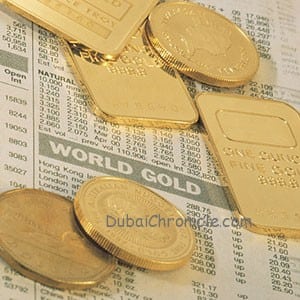
Goldman Sachs lowered its 12-month forecast for commodity returns, predicting a fall in precious metals, agriculture and energy.
The investment bank, which kept its “neutral” recommendation on commodities, lowered its S&P GSCI Enhanced Commodity Index return forecast by 2 per cent, compared with its previous forecast of a 0.1 per cent increase.
The 12-month return forecast includes a 15 per cent drop in precious metals, a 7 per cent fall in agriculture and a 1 per cent decline in energy, the bank said in a note on Wednesday.
Goldman Sachs said it expects industrial metals to rise 2 per cent.
“Although geopolitical risks dominated the market flows in late August, oil and gold prices have since returned to mid-August levels as the likelihood of military intervention in Syria has diminished,” Goldman analyst Jeffrey Currie said, adding that returns were expected to be mostly flat over the next year.
Goldman Sachs maintained its 12-month Brent price view of $105 per barrel, saying that though prices remain skewed to the upside owing to the uncertainty over Syria, a range of about $125.00/bbl was “unsustainable”, as the OECD strategic petroleum reserves (SPR) act as significant spare capacity.
It forecast an average WTI-Brent spread of -$8 to -9 per barrel in 2014.
Goldman also said it expected gold prices to decline into 2014 on the back of an acceleration in US economic activity and a less accommodative monetary policy.
Gold slipped to a three-week low on Wednesday before recovering on bargain-hunting.
Gold, which has fallen more than 18 per cent this year, is also being hurt by expectations the US Federal Reserve will opt to taper its monetary stimulus programme after a meeting on September 17-18.
Spot gold hit a low of $1,356.85 an ounce, its weakest since August 22, and closed at $1,362.77, down $1.02. The Fed’s three quantitative easing schemes have buoyed prices of gold and other commodities.
“It’s really a confluence of three things,” said Mark Keenan, a cross-commodity research strategist at Societe Generale in Singapore.
“Currency weakness, specifically in India, the tapering that we believe will be announced in (the Fed) meeting, and a slight deterioration in the requirement of having a safe-haven in the light of these strikes in Syria possibly being averted.”
US gold rose $2.80 an ounce to $1,366.80.
“Although gold may decline in sympathy as well, we think it is in store for a much larger break once the Fed announces its tapering decision next week.”
The physical market has yet to pick up in Asia and other regions even though gold has fallen below the psychologically key level of $1,400 an ounce.
On the other hand, sales of scrap subsided in Singapore, keeping premiums for gold bars unchanged at $1 to $1.50 an ounce to spot London prices.
In top consumer India, a sharply lower rupee curbed buying interest despite an approaching festival.




































